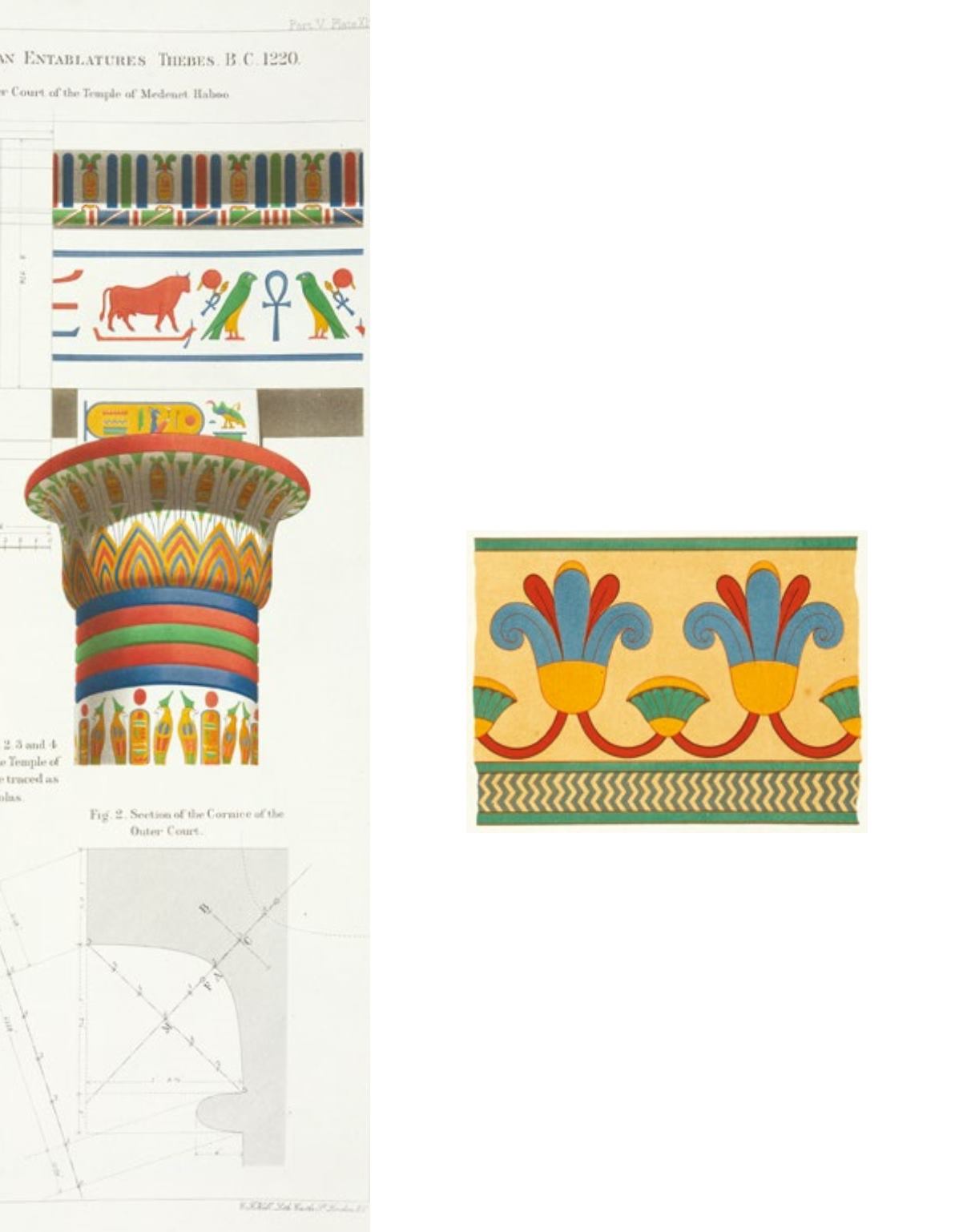

120
269
PENNETHORNE, John.
The Geometry and Optics of Ancient
Architecture Illustrated by Examples from Athens and Rome. Assisted
in the Drawing and coloring by John Robinson.
Londres & Edinbourgh,
Williams & Norgate, 1878.
Grand in-folio (573 x 388 mm) de 2
ff.n.ch.
(faux-titre et titre), XVI, 249 pp., 55 planches lithographiées hors texte
dont 11 en couleurs et 12 à double page, nombreuses figures dans le texte ;
demi-chagrin à coins lie-de-vin, titre doré sur le plat, dos à nerfs, tranches
dorées
(reliure de l’époque).
500 / 800
€
Blackmer, 1280.
Édition originale, tirée à petit nombre aux dépens de l’auteur.
John Pennethorne (1808-1888) visita l’Italie, l’Égypte et la Grèce entre
1832 et 1834 afin d’étudier l’architecture ancienne et de déterminer les
effets de perspective et d’optique utilisés pendant la construction des
bâtiments.
Quelques usures à la reliure avec des restaurations aux coins et aux coiffes.
Provenance : J. O’Kinealy (cachet humide moderne).
First and only edition of this lavishly produced work, the first book to
reveal the use of curvature in ancient architecture. Pennthorne spent the
years 1832 to 1834 as a travelling architectural student in Italy, Greece and
Egypt. He revisited Greece in 1837 to take wax molds and to make precise
measurements for the support of his theories on the geometrical basis of the
optical refinements of ancient architecture.
[On joint :]
LE BLANC & ARMENGAUD.
The Engineer & Machinist’s Drawing
Book ; A complete Course of Instruction for the Practical Engineer.
Comprising linear drawing, projections, eccentric curves.... and perspective.
Glasgow ; Edinburgh ; Londres & New York, Blackie & Son, sans date [vers
1850].
In-folio (370 x 262 mm) de VIII, 116 pp., titre frontispice et
71 planches gravés (dont 2 à double page) ; demi-chagrin brun à coins, dos
à faux nerfs
(reliure de l’époque).
Exemplaire fatigué.


















